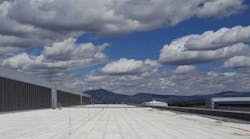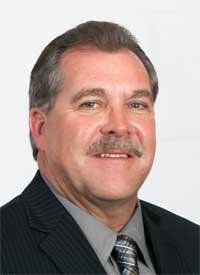Roundtable: A Look Into the Multi-Cloud Future
Today we continue our Data Center Executive Roundtable, a quarterly feature showcasing the insights of thought leaders on the state of the data center industry, and where it is headed. In today’s discussion, our panel of experienced data center executives – Aligned Energy CEO Andrew Schaap, Shay Demmons of RunSmart, FORTRUST COO Robert McClary, and Bob Woolley of RagingWire Data Centers – discuss trends in cloud computing and the trend toward customer adoption of multiple cloud platforms.
The conversation is moderated by Rich Miller, the founder and editor of Data Center Frontier.
Data Center Frontier: It’s increasingly a multi-cloud world. What are key strategies that data center operators and their customers can use to address multi-cloud deployments?
SHAY DEMMONS, RunSmart
Shay Demmons: Multi-cloud deployments eliminate the problem of having all your eggs in one basket, but in return add a new layer of complexity to your data center management. The key to maximizing your multi-cloud or hybrid cloud deployment is to ensure that you have fully integrated your platform from cloud to on-premise and all the systems in-between so that you can start to leverage your resources and take advantage of your new flexibility.
If done correctly, data center operators can change the way they manage workloads by sending jobs to the lowest cost resource, in real-time. This will be determined by the workload, and predefined factors that affect its priority: Does the job require lots of I/O? Is the job sensitive to latency? Will the workload be resource intensive? Traditional follow-the-sun strategies shared the same type of business metrics, essentially utilizing a pool of globally distributed resources as needed to reduce cost. Multi-cloud strategies will share a similar consideration.
Your actual workload should drive business decisions and your software-defined data center solution should help to not only manage your multi-cloud deployment but make it a resource that reduces cost.
ROBERT WOOLLEY. RagingWire Data Centers
Robert Woolley: Twenty years ago, the choice was between a telecom data center, optimized around a single carrier and a carrier neutral data center, designed to host multiple telecommunications PoPs or points of presence. Most of us would agree that carrier neutral won. Today the choice is between a dedicated data center server environment or a hybrid deployment of colocation, cloud, and legacy in-house data centers. We believe the hybrid approach will win.
In this new hybrid world, data center providers need to make it as easy to connect to multiple clouds as it is to connect to multiple telecommunications networks. The result will take software-defined networks (SDNs) from theory into practice and ultimately a business imperative.
Using SDN, the data center provider delivers direct connections to top cloud providers. We are also seeing this network used to connect to software as a service (SaaS) applications and an ecosystem of on-net buildings and service partners. With this approach, data center customers have full control over their cloud connections. They can turn up, turn down, and change individual connections at any time without involvement from the data center provider. Reporting is in real-time and on-demand.
Interestingly, multi-cloud deployments have ended up delivering a different value proposition than originally conceived. Multi-cloud was once thought to be a strategy for driving down pricing to razor thin margins. Instead, multi-cloud has become a best practice for delivering scalable and flexible on-demand capacity for applications that require that type of computing. For more stable applications, dedicated servers are proving to be more cost effective and reliable.
The hybrid computing model delivered in a colocation data center that meets the requirements for uptime and scalability provides the best of both worlds.
ANDREW SCHAAP, Aligned Data Centers
Andrew Schaap: Actually, I would argue that it’s fast-becoming a hybrid-cloud world because many companies are dealing with multiple clouds, data sources and vendors. While businesses continue to think about their scalability, it’s important for their data center provider to be able to future-proof their site selection criteria; meaning not just plan for their density needs today, but for future growth. Organizations are only as agile, fast, and visionary as their data centers.
Cloud, colocation, or on premise, the data center is the factory of the digital age. Success requires a data center partner who can deliver space, cooling, power and network capacity nimbly and quickly and has a strategic vision for how to meet the capacity needs of tomorrow.
Robert McClary, FORTRUST
Robert McClary: Data centers in general, and colocation data centers in particular, need to start providing an ecosystem model for their tenants, meaning their tenants or customers have to have access to several different options.
They have to have convenient choices, whether it’s public or private cloud services, or different types of cloud services, and they need to have exposure to all those different cloud services inside a colocation data center.
RECAP: Bookmark our entire DCF Executive Roundtable
Keep pace with the fact-moving world of data centers and cloud computing by following us on Twitter and Facebook, connecting with me on LinkedIn, and signing up for our weekly newspaper using the form below:
About the Author




